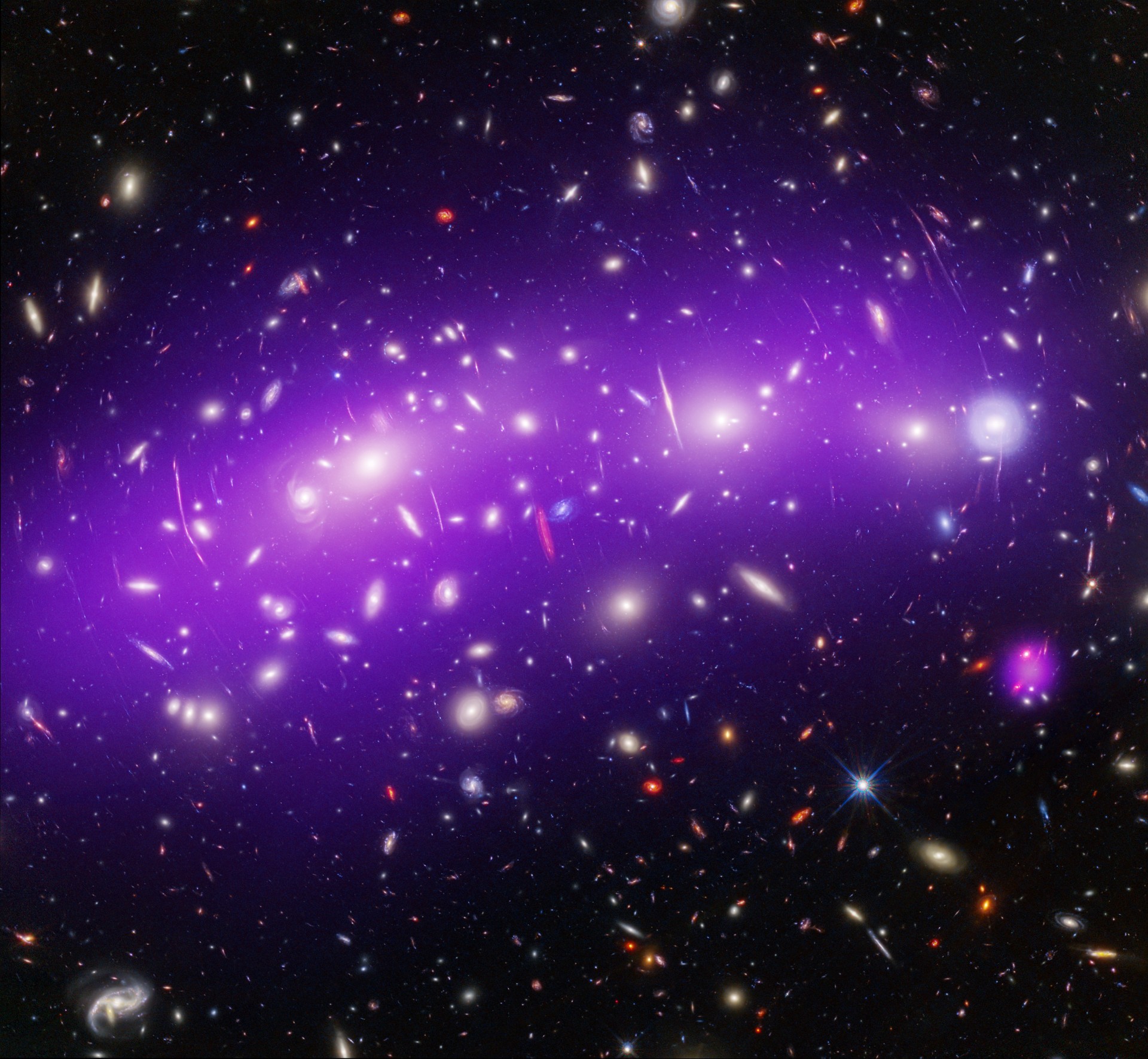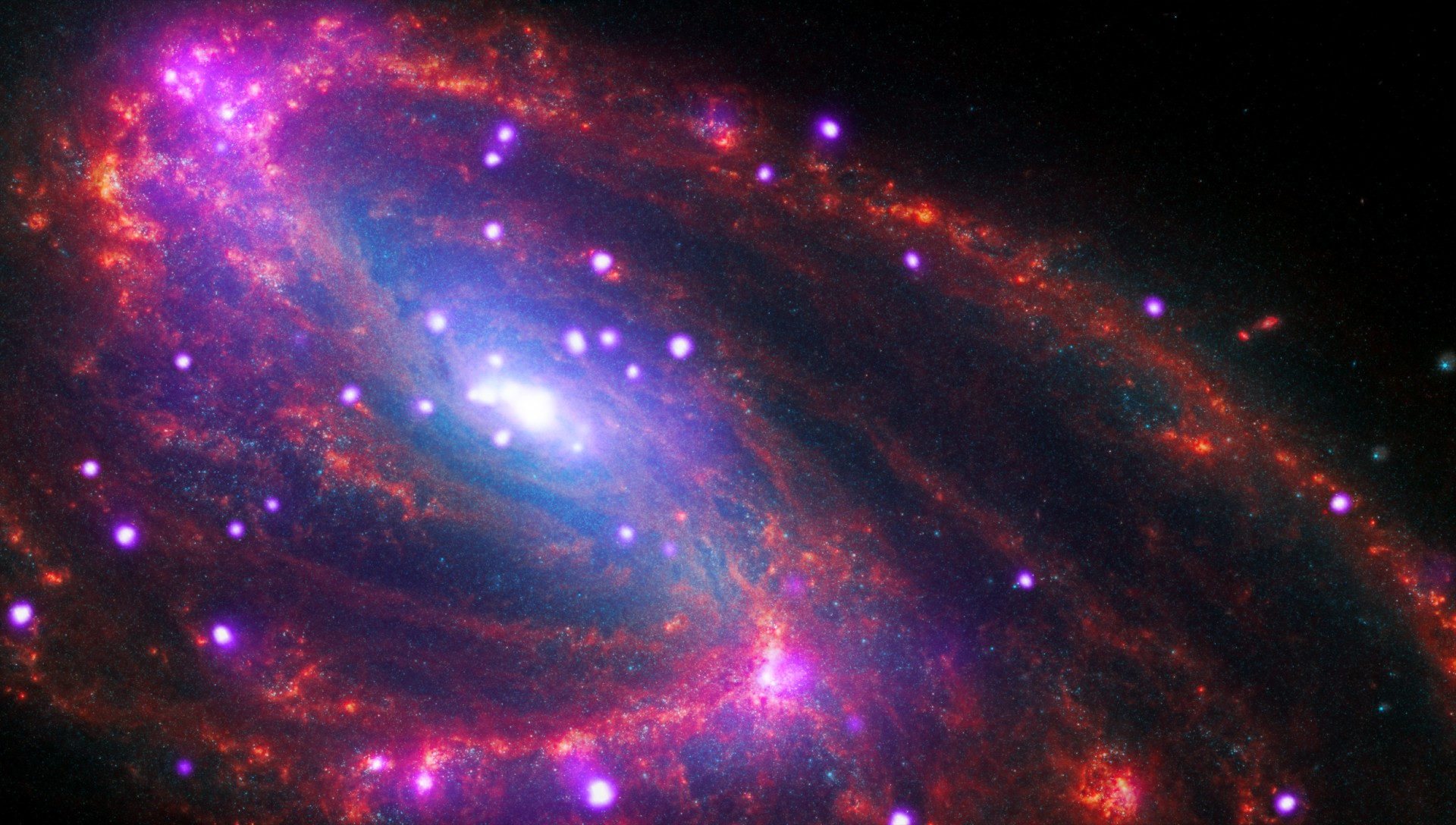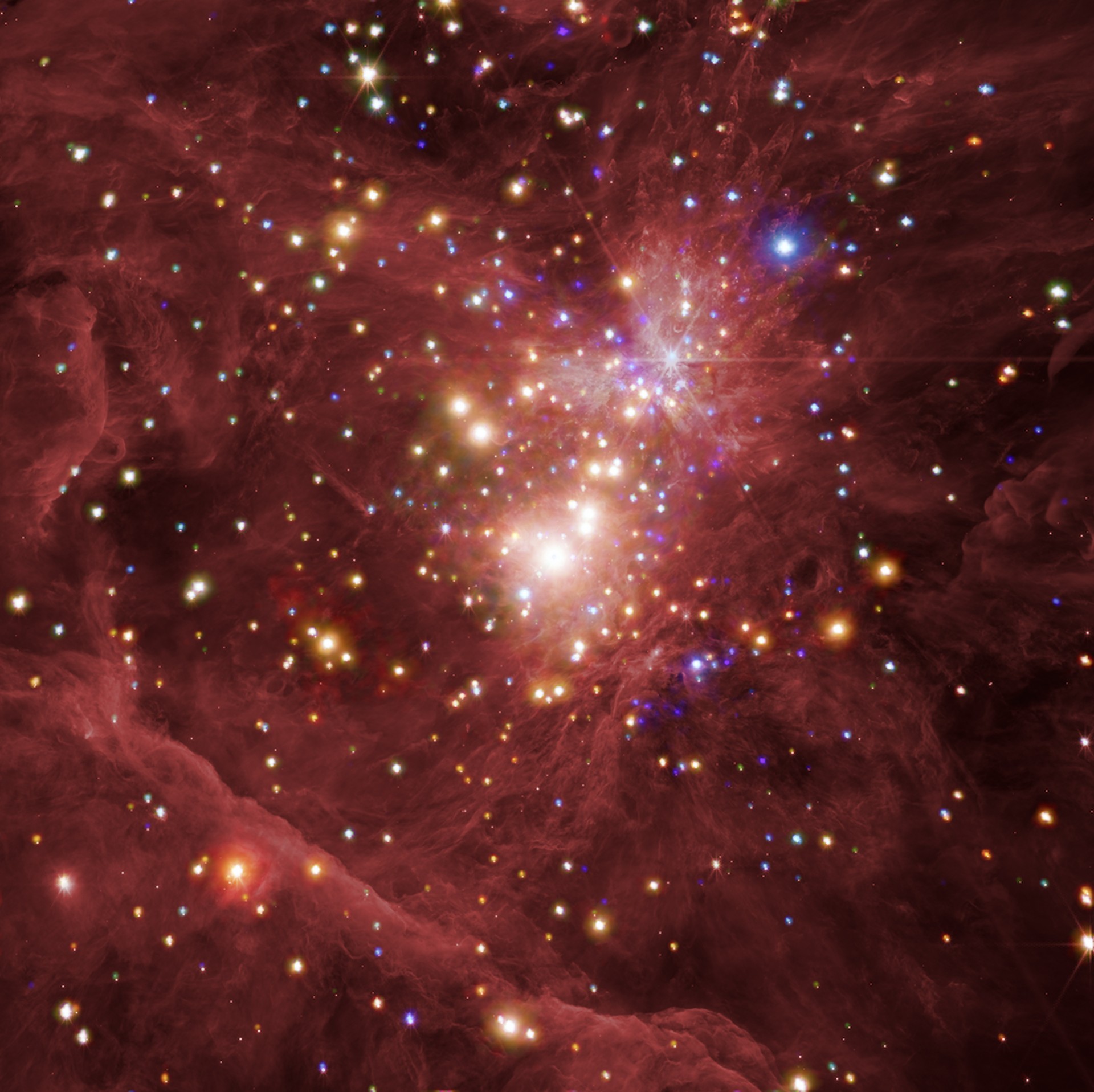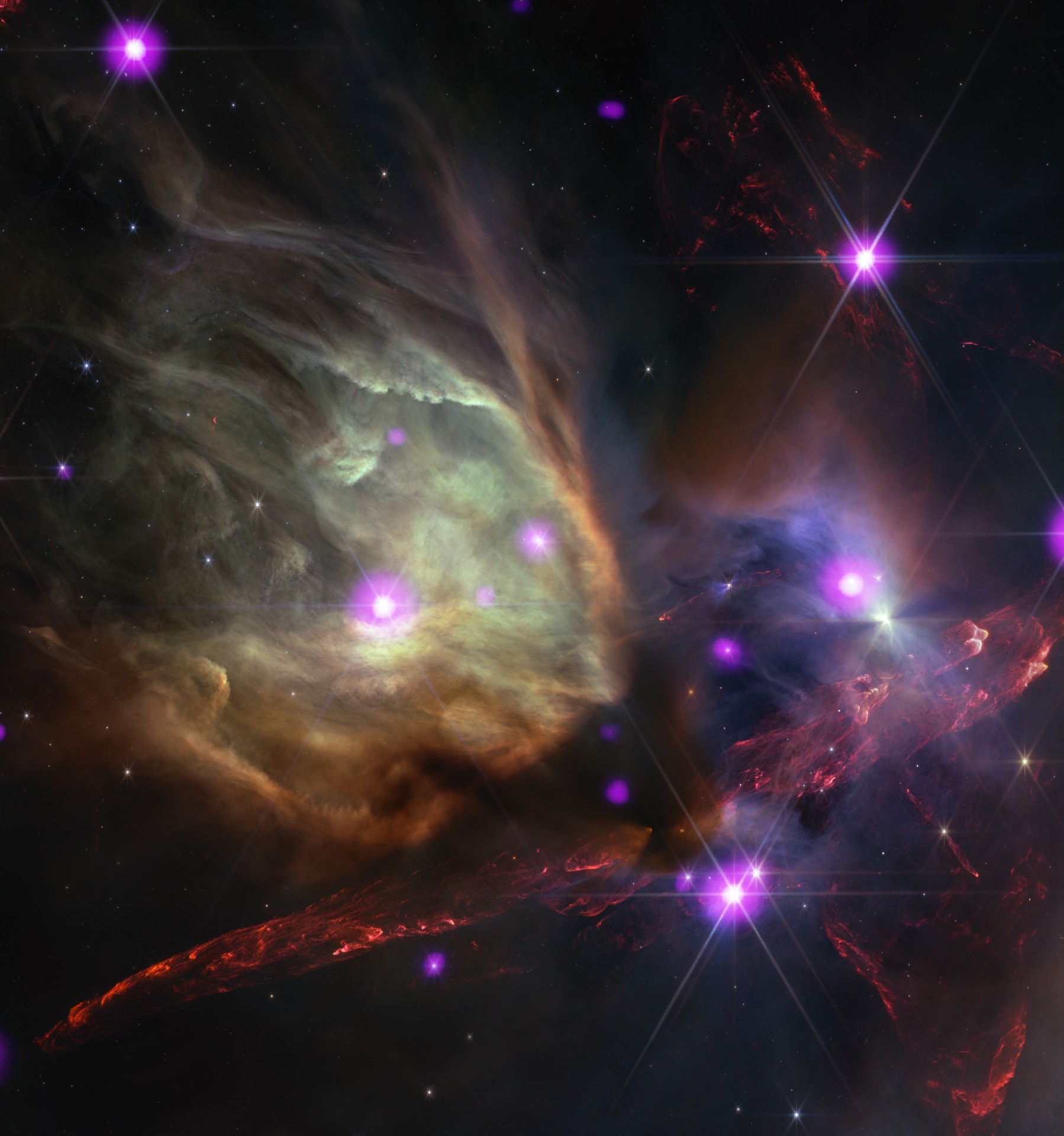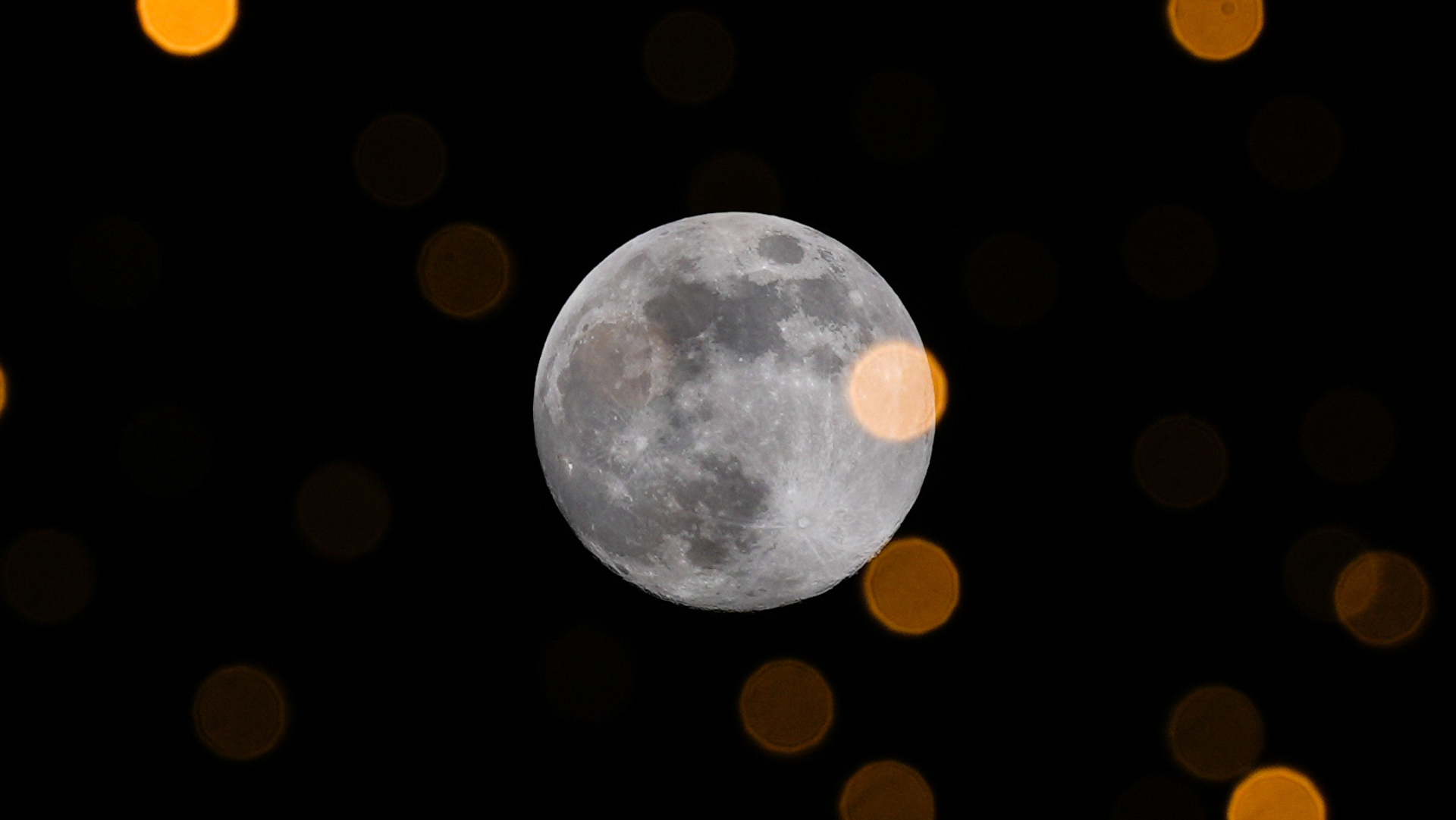Road trip! Tour the universe with these gorgeous images from NASA's Chandra X-ray telescope
Newly released images from NASA's Chandra X-ray telescope take viewers on a road trip through the universe, offering spectacular sights of various cosmic attractions.
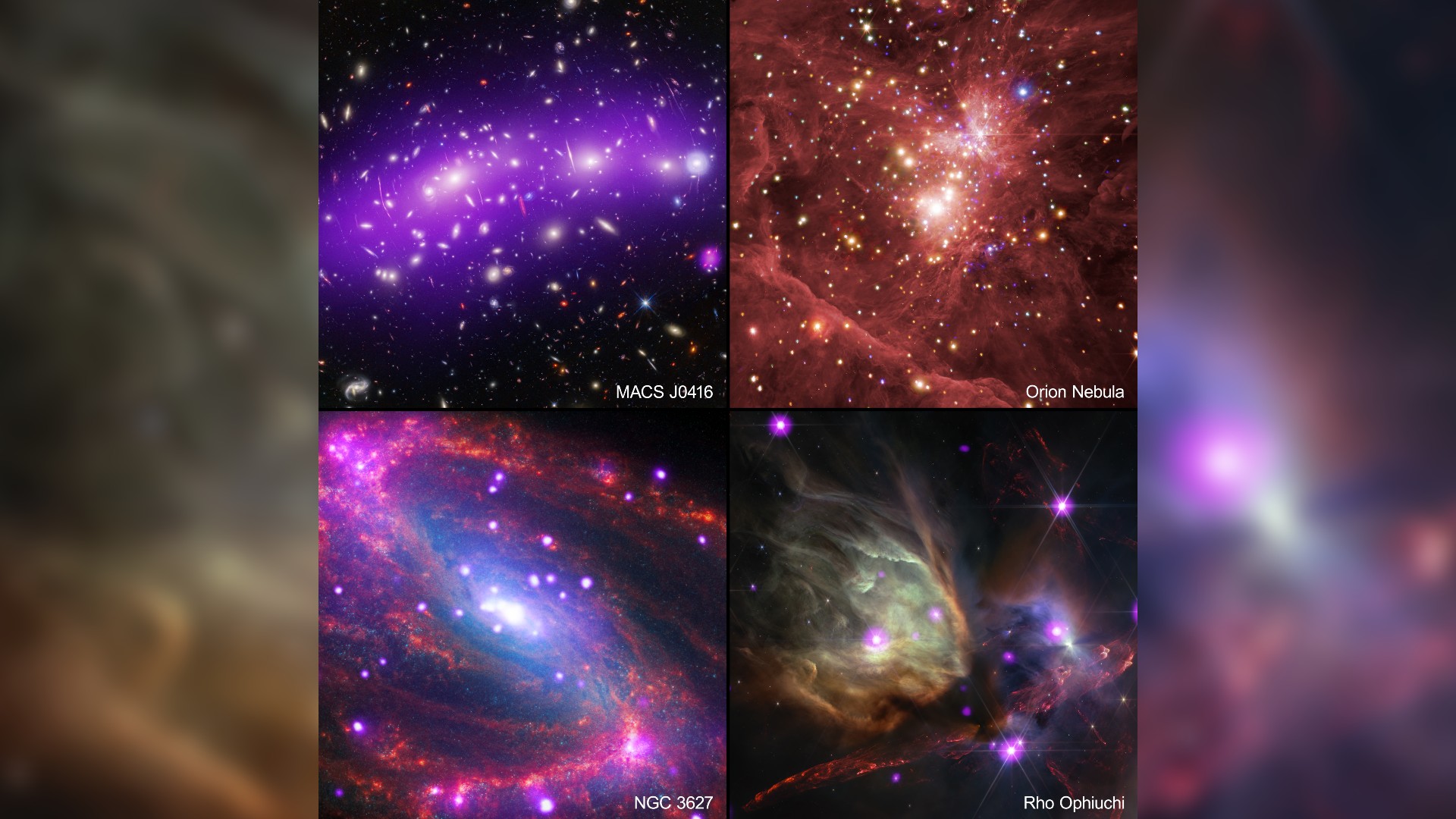
Newly released images from NASA's Chandra X-ray telescope take viewers on a road trip through the universe, offering spectacular sights of various cosmic attractions.
The recent Chandra data builds on previously released images from the James Webb Space Telescope. Layering the image data from both space telescopes reveals cosmic features that emit different wavelengths of X-ray, optical or infrared light.
The new cosmic collection includes images of a cloud complex called Rho Ophiuchi, the Orion Nebula, a spiral galaxy named NGC 3627 and a galaxy cluster known as MACS J0416, according to a statement from the Chandra X-ray Observatory's website.
The first image, located in the upper left, captures MACS J0416. Located 4.3 billion light-years from Earth, this distant cluster embodies multiple galaxies represented by the different glowing specks of whites, purples, oranges, golds and reds, as previously captured by Webb and the Hubble Space Telescope. The new composite image includes a reservoir of superheated gas stretched across the middle that emits a soft band of purple light detected by Chandra.
Related: NASA's Chandra X-ray telescope captures closest super star cluster to Earth (image)
The X-ray observatory also captured an up-close view of a distant galaxy called NGC 3627, which lies 36 million light-years from Earth. The image, located in the lower left of the collection, captures the galaxy's central bar-shaped structure composed of stars and two distinct spiral arms that extend out into space. As such, the galaxy is classified as a barred spiral galaxy.
"X-rays from Chandra in purple show evidence for a supermassive black hole in its center as well as other dense objects like neutron stars and black holes pulling in matter," according to the statement. "Meanwhile Webb finds the dust, gas and stars throughout the galaxy in red, green, and blue. This image also contains optical data from NASA's Hubble Space Telescope in red, green, and blue."
Breaking space news, the latest updates on rocket launches, skywatching events and more!
Moving to the upper right, the next image captures the heart of the Orion Nebula, which is located about 1,500 light-years from Earth in the Milky Way, in the constellation of Orion. This enormous cloud of dust and gas is home to a vast amount of new star formation. Chandra's X-ray data is colored in red, green and blue, while the darker red gas and dust, from which new stars form, was detected by Webb.
"Here, the young star nursery resembles a dense, stringy, dusty rose cloud, peppered with thousands of glowing golden, white and blue stars," according to the statement. "Layers of cloud around the edges of the image, and a concentration of bright stars at its distant core, help convey the depth of the nebula."
Among the four new images is another stellar nursery, Rho Ophiuchi, which is the nearest star-forming region to Earth at only 390 light-years away. This cloud complex, captured in the lower right image, is filled with gas and stars of different sizes and ages. The X-ray data from Chandra captures the hot, outer atmospheres of infant stars in purple, while the infrared data from Webb reveals red, yellow, cyan, light blue and darker blue regions of gas and dust.
"The murky green and gold cloud resembles a ghostly head in profile, swooping down from the upper left, trailing tendrils of hair, according to the statement. "Cutting across the bottom edge and lower right hand corner of the image is a long, narrow, brick red cloud which resembles the ember of a stick pulled from a fire."
The set of four composite images were released together on July 11.

Samantha Mathewson joined Space.com as an intern in the summer of 2016. She received a B.A. in Journalism and Environmental Science at the University of New Haven, in Connecticut. Previously, her work has been published in Nature World News. When not writing or reading about science, Samantha enjoys traveling to new places and taking photos! You can follow her on Twitter @Sam_Ashley13.
